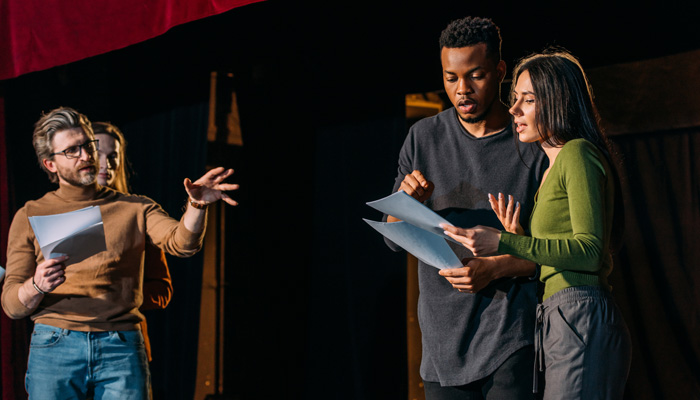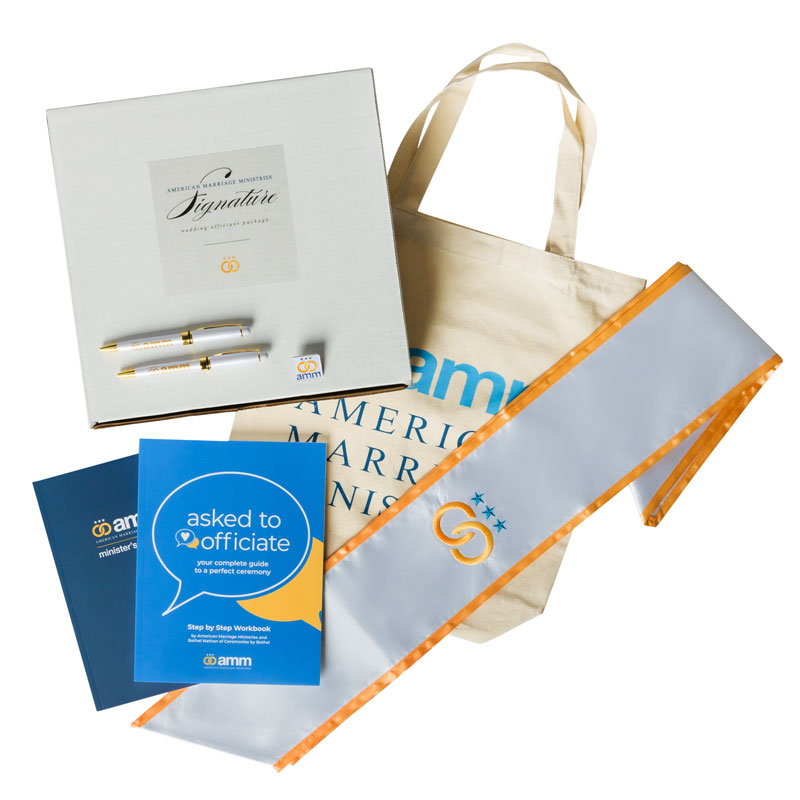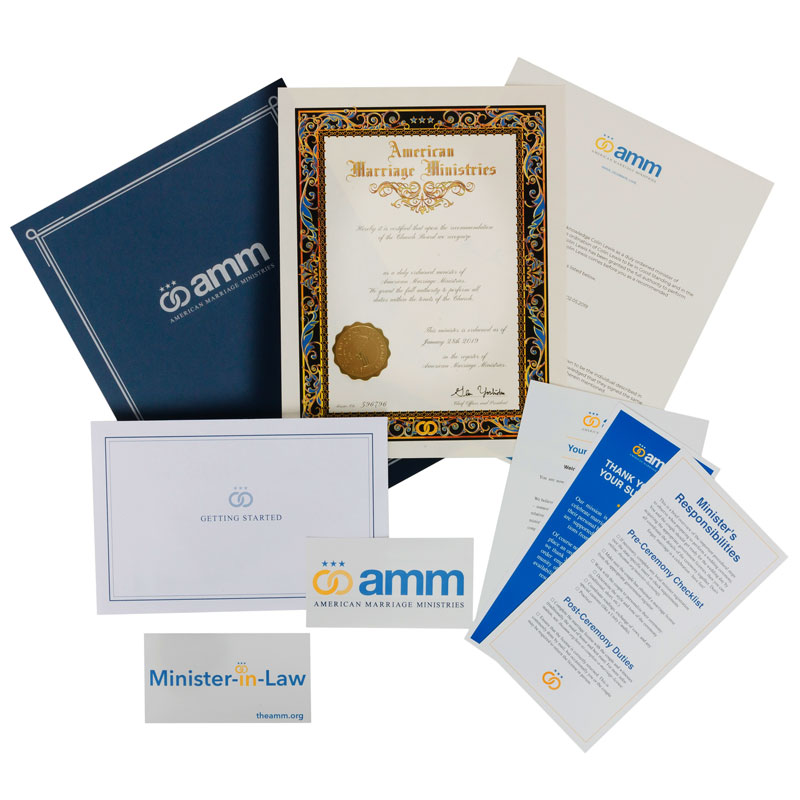Wedding Ceremony Basics

There are a million ways that you can perform a wedding ceremony, but these pointers should help you create a solid framework. Once that’s in place, you can add different components like rituals, readings, or even audience participation.
Let’s start with the six essential parts of the wedding ceremony:
1. Procession
This is the formal start of the wedding ceremony.
- Before the processional can start, the guests should be seated.
- The officiant and wedding party enter and stand in their designated places. Sometimes the officiant is already up at the front waiting.
- Music is often played during the processional, as the wedding party enters in the following format: the officiant and groom, the bridesmaids and groomsmen, the maid of honor and best man, and finally, the bride.
- Traditionally, the guests stand as the bride enters, accompanied by her escort.
2. Invocation
This is the “opening” part of the ceremony, when the officiant greets the guests, introduces the couple, announces the purpose of the gathering, and shares a few words on marriage.
- The officiant welcomes the guests.
- The officiant introduces the couple and explains why they are here — “We are gathered here today to join…”
- This is an opportunity to talk briefly about marriage and love.
3. Declaration of Intent
This is when the couple declares their intent to marry.
- The officiant asks the couple if they will marry each other — “do you take so-and-so to be your lawfully wedded…”
- The couple responds: “I do,” or, “I will.”
This is the verbal equivalent of signing the marriage license. The Declaration of Intent is one of the few parts of a ceremony that can be legally required — depending on the location of the wedding — and it is the couple’s public declaration that they are knowingly and willingly entering the contract of marriage.
4. Vows and Rings Exchange
The couple exchange vows, rings and promise to remain committed to each other. Prior to the wedding, the couple should rehearse their vows with the officiant, separately. This allows them to be comfortable with speaking them outloud, without hearing their partner’s lines for the first time.
- The couple exchange vows that they have prepared.
- The officiant facilitates the exchange of vows with a simple announcement such as, “As you place this ring on your partner’s finger…”
- Rings are presented and exchanged.
5. Pronouncement
The marriage is declared official!
- The officiant declares that the couple is married, “I now pronounce you…”
- The officiant introduces the newlyweds, “It is my honor to introduce…”
- The officiant tells the newlyweds to kiss!
6. Recession
The ceremony ends and the wedding party exits. This part is basically the exact opposite of the procession.
- The couple walks out of the ceremony, down the aisle.
- The wedding party exits after the couple, followed by the guests.
Having established the basics of the wedding ceremony, here are some important points to keep in mind that will ensure that the ceremony you are writing flows well.
- The ceremony length should be around 20 minutes. That’s enough time to properly celebrate the couple, and it allows for the Officiant to set and manage the tone of ceremony in the way the couple wants. However, 20 minutes is not so long that the guests fade out, which reduces the impact of the ceremony.
- The Officiant should have the ceremony in front of them, either on paper or an electronic device (e.g. an iPad). And any readings and vows being read by someone other than the Officiant should be printed out and handed to person reading it either before the ceremony or at the time they are supposed to read it. No memorization or winging it during a wedding ceremony!
- The Officiant should have all stage notes in the ceremony. From simple things like when to tell the guest to rise and to sit within the procession to more complex movements such as a handfasting ceremony. Italicize them, put them in a different color, or put them in parenthesis… all that matters is that they aren’t forgotten and the best way to do that is to have them in the ceremony version the Officiant is using on the day of.
- Practice, practice, practice, and enjoy. The Officiant should practice the ceremony until they feel very comfortable delivering it. Being comfortable with the wedding ceremony will make the delivery much more enjoyable and that joy will transfer to the couple and the guests.
For more information on the wedding ceremony format. Check out AMM’s page “The Parts of a Wedding Ceremony Script“.





